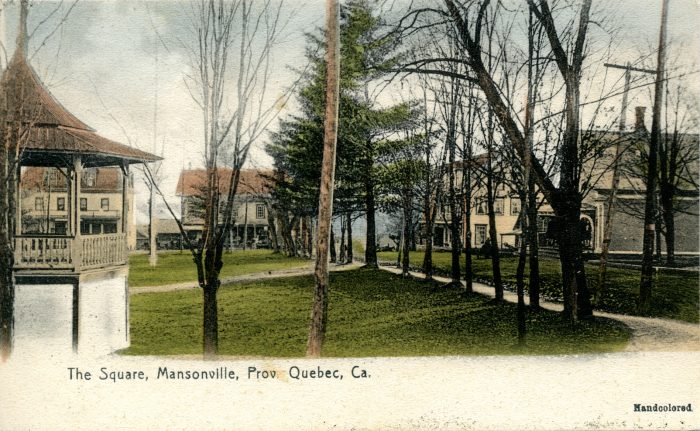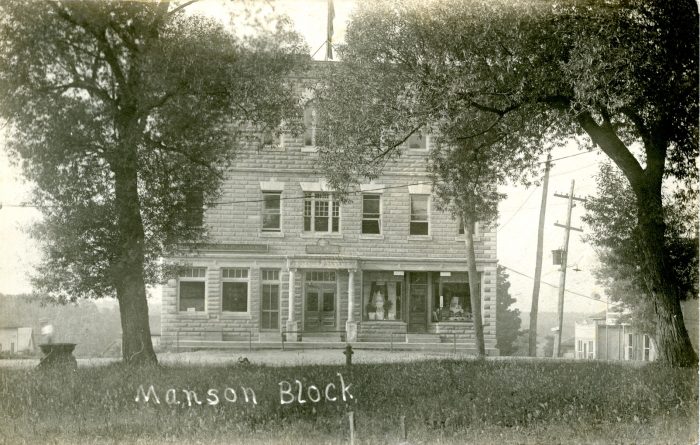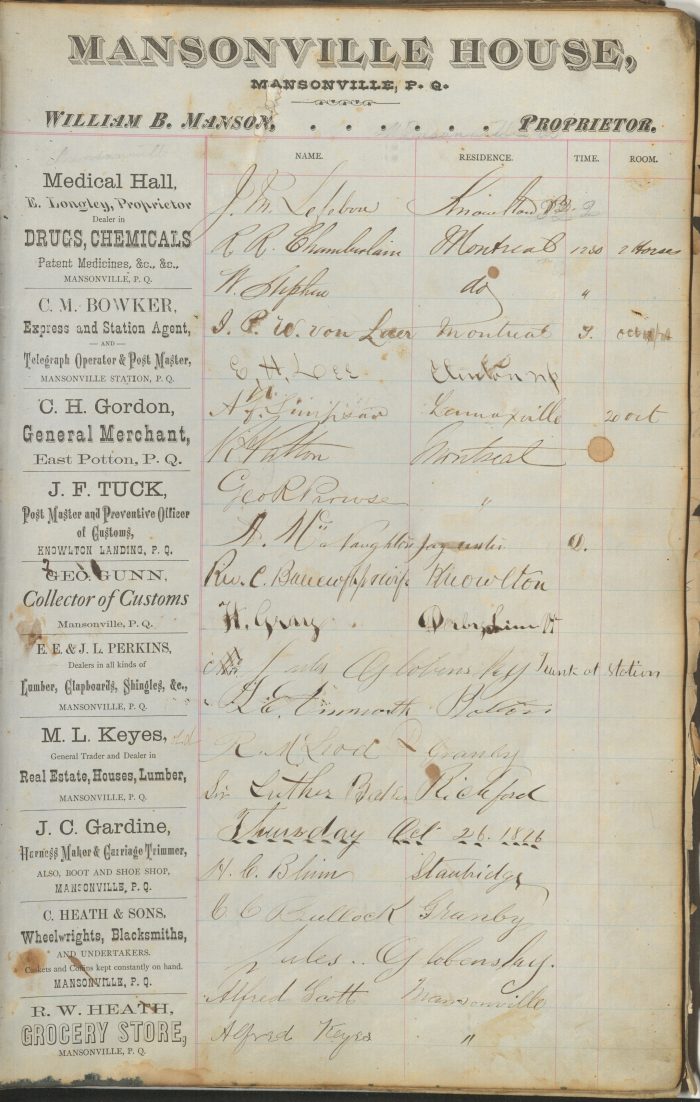

Share
Mansonville’s Manson House hotel and Mason Block
March 8th, 2022
Going back one hundred years to the corner of what is presently Mansonville’s Principale and Joseph-Blanchet Streets depicts a much different streetscape from what we see today. Postcard views from the early 20th century showing the town square and the corner that was then Main and Bridge Streets are striking for the tree-lined roads and picturesque buildings, which are only vaguely recognizable to the contemporary viewer.
Existing only as a parking lot today, the Manson House hotel, sometimes also known as Mansonville House, has its origins at least as far back as the 1860s, when it was operated by James Manson. The hotel was taken over by one of James’ sons, William B. Manson, in 1871. Over its 120+ years of existence, Manson House was operated by a series of different owners, from Benjamin Sisco/the Sisco Brothers in the 1890s, to Samuel H. Botterill from sometime in the aughts to around 1916, followed by Galen Heath and his sons, Arnold and Merrill. Following the Heaths, the hotel went through a revolving door of owners from 1958 to 1983, when the Mansonville Hotel met its fate with a fire that destroyed the top two floors on June 8th, 1983 and it was subsequently demolished.
Before the hotel’s slow decline in the second part of the 20th century, it was a focal point of the town, attracting visitors from near and far. From the time of William B. Manson, the ETRC Archives has this lovely ledger recording the guests of the Manson House, beginning in 1876 and then jumping ahead to the 1910s when it was owned and operated by Samuel H. Botterill. The ledger records guests from places such as Cowansville, Magog, Montreal, California and a great many from towns in Vermont, often welcoming 5-10 guests on any given day. The Manson House had a short-lived existence as a temperance hotel in 1915, hopping on the prohibition-era trend of offering hotel-goers an alcohol-free option for their travels. The Manson House also served an important role in the social life of the town, including a third-floor ballroom and served as a gathering place for the community.
While the Town Hall resides in its original spot from the 1800s, it has gone through three versions, with the present Town Hall dating from 1923. The first Town Hall building was built by James Manson, giving it the “Manson Block” name. This building was destroyed by fire in 1910 and rebuilt as the Manson Block pictured here. For a short-lived 13 years, the three-story cement building housed the Town Hall, customs office, general store, post office, telephone exchange, and the Canadian Bank of Commerce. On January 29th, 1923, it, too, was destroyed by fire, causing upheaval in the town’s services, including a days-long interruption in telephone communication and rural mail delivery. The only items that were saved from the building were, reportedly, two barber’s chairs from the barber shop in the basement. Newspapers at the time lamented at the loss of Mansonville’s “most beautiful building.” The town hall rose from the ashes once again, however, and is the building we see today.


